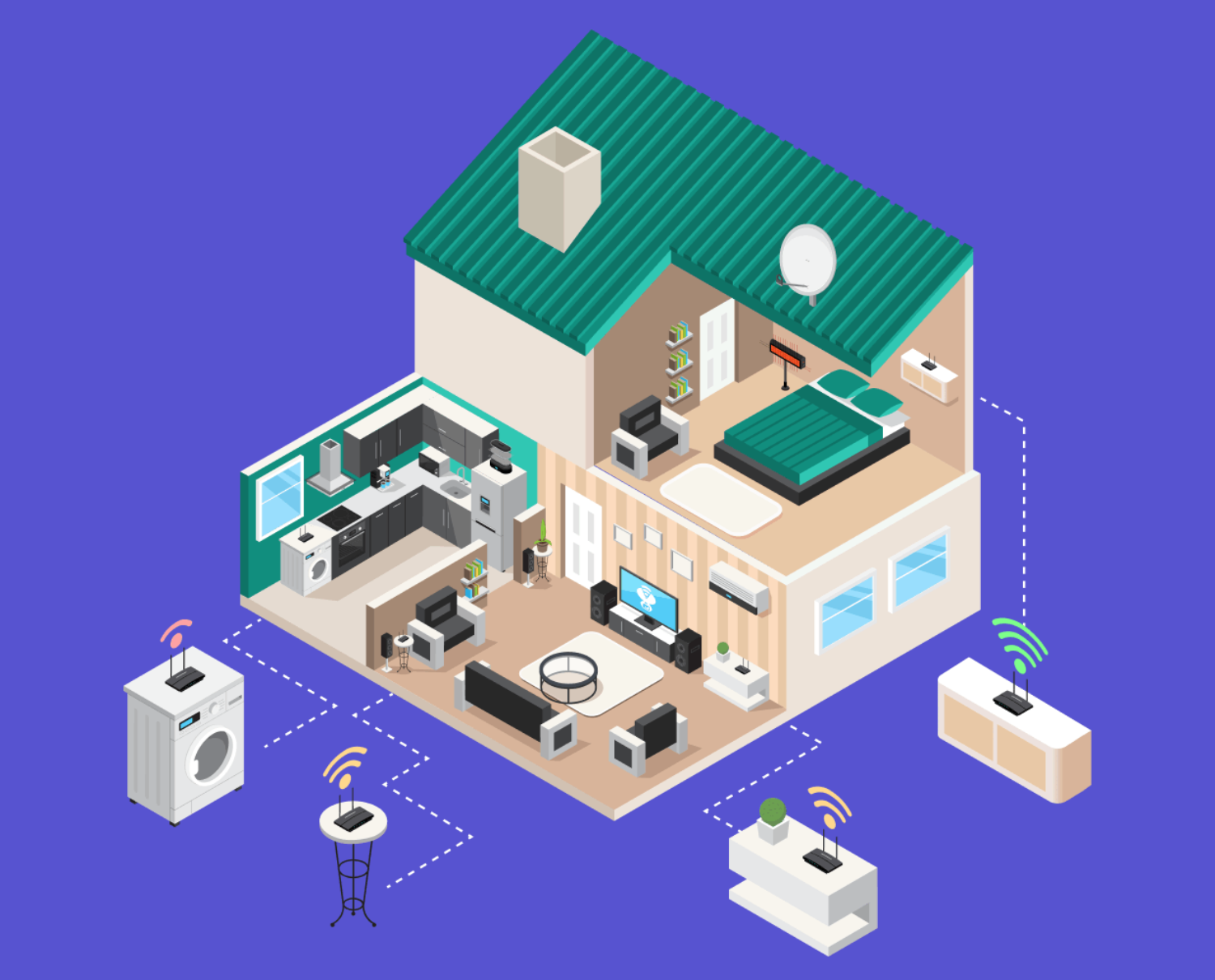Finding the best spot for your WiFi router in a three-story house can be tricky. The right placement ensures strong, consistent internet throughout your home.
In a large, multi-level home, WiFi signals often struggle to reach every corner. Walls, floors, and other obstacles can interfere with the signal. This makes placement crucial. A well-positioned router can mean the difference between a fast, reliable connection and frustrating dead zones.
This guide will help you understand the best places to put your WiFi router. With the right placement, you can enjoy seamless internet access on all three floors. Let’s explore the ideal spots to maximize your WiFi coverage and keep your devices connected.

Credit: www.netspotapp.com
Central Location
A central location helps WiFi signals reach all areas. Place the router on the middle floor, if possible. Avoid placing it near walls or metal objects. These can block or weaken the signal. Keep it away from other electronics too. They can cause interference. A shelf or table in the open works best.
Placing the router in a corner is not a good idea. Signals will not spread evenly. Try to keep it in the center. This way, every room gets a strong signal. The router should be in a clear, open space. This ensures the best coverage.
Elevated Position
Routers work better when placed higher up. A high spot helps signals travel farther. Avoid putting it on the floor. Place it on a shelf or table. This way, the signal can reach more places. Walls and furniture can block the signal.
Top floors are great for routers. Signals can go down easily. Coverage improves on all floors. Place the router in the center. This provides the best coverage. Avoid corners or closed spaces. Keep it away from metal objects. These can block the signal too.
Minimize Interference
Keep the router away from large electronics. Items like TVs and microwaves can cause signal interference. Place the router in a central spot. This helps the signal spread evenly across the house.
Avoid placing the router near walls or floors. Thick walls can block the signal. Place it on a high shelf or table. This helps the signal reach more areas.
Router Quality
Place your WiFi router centrally on the second floor of a three-story house. This helps distribute the signal evenly. Avoid placing it near walls or metal objects.
High-performance Routers
High-performance routers offer better speed and range. They are more reliable. These routers can handle multiple devices. This is important for big houses. They ensure a stable connection. Everyone in the house stays online.
Dual-band Benefits
Dual-band routers offer two signals. One is 2.4 GHz, the other is 5 GHz. The 2.4 GHz band covers a larger area. It is good for basic tasks. The 5 GHz band is faster. It is great for streaming and gaming. Having both bands helps avoid interference. This makes the connection more stable.
Mesh Network
Mesh networks cover large areas. They are great for big homes. Each device in the system talks to each other. This creates a strong, wide signal. You get fewer dead zones. It’s very reliable. Easy to set up and manage. These networks often fix themselves. If one device fails, others pick up the slack. They give you a stable internet connection.
There are many good options. Eero is simple and easy to use. Google Nest has strong coverage. Netgear Orbi is very powerful. TP-Link Deco is budget-friendly. Each system has its own pros. Choose one that fits your needs and budget.

Credit: www.quora.com
Signal Boosters
WiFi extenders help to cover dead spots. Place them halfway between the router and the dead zone. This can make weak signals stronger. Remember to put it in a place with a good signal. Not too close to the router. Not too far either. This can help devices connect better.
Powerline adapters use electrical wiring. They send internet through your house’s wires. Plug one adapter near the router. Plug another adapter where you need a better signal. This can help in rooms far from the router. No need to run new wires. Easy to set up and use.
Testing Signal Strength
WiFi analyzers help find the best signal. These tools show signal strength in different spots. Use them to walk around your house. Check the signal on each floor. Record the strength in each room. This helps in finding the best place for the router.
Optimal adjustments need to be made after testing. Try moving the router slightly. Test again to see if the signal improves. Keep testing until you find the perfect spot. The right place can make a big difference. Strong signals mean better internet. Happy surfing!
Security Considerations
A strong password keeps your wifi safe. Use a mix of letters, numbers, and symbols. Avoid common words or easy patterns. Change your password regularly. This makes it hard for hackers to break in.
Firmware updates keep your router secure. Check for updates often. Updates fix bugs and improve security. They help your router run better. Follow the manufacturer’s instructions for safe updates.

Credit: www.reddit.com
Frequently Asked Questions
Where Should I Place My Wifi Router?
Place your wifi router centrally on the second floor. This ensures even distribution of the signal across all three floors.
Can I Put The Router In The Basement?
Avoid placing the router in the basement. The signal may struggle to reach upper floors due to obstructions.
Should The Router Be High Or Low?
Place the router high, on a shelf or mounted on a wall. This helps the signal travel more effectively.
How Far Should The Router Be From Devices?
Keep the router within 10-15 feet of your most-used devices. This minimizes signal loss and maximizes speed.
Conclusion
Finding the best spot for your WiFi router matters. It ensures strong signal coverage on all floors. Place it centrally on the second floor for best results. Elevate it on a shelf or wall mount. Avoid placing it near metal objects or thick walls.
Keep it away from microwaves and cordless phones. Adjust its antennas for wider reach. Test different spots and see what works best for your home. Enjoy seamless internet throughout your three-story house.
